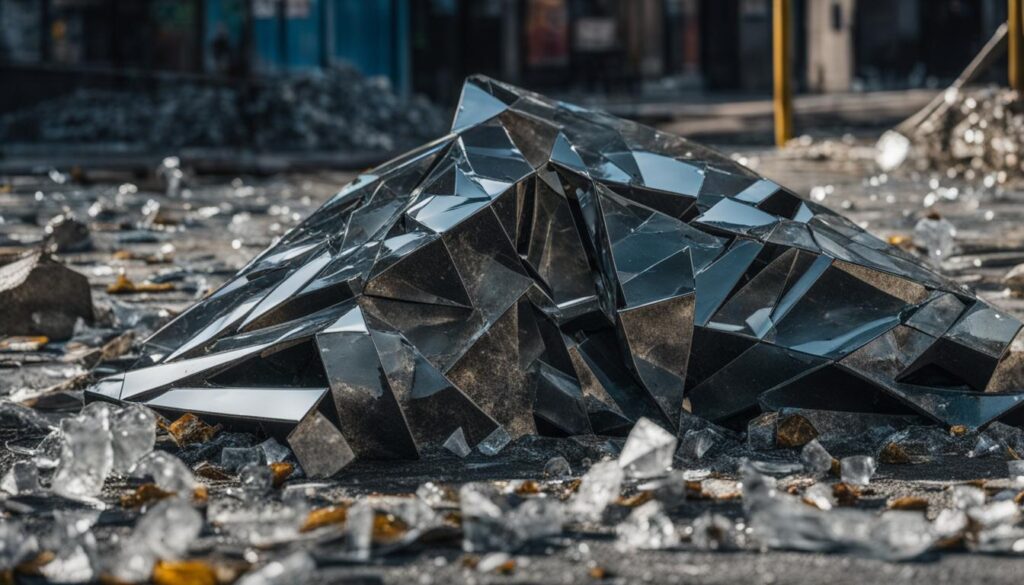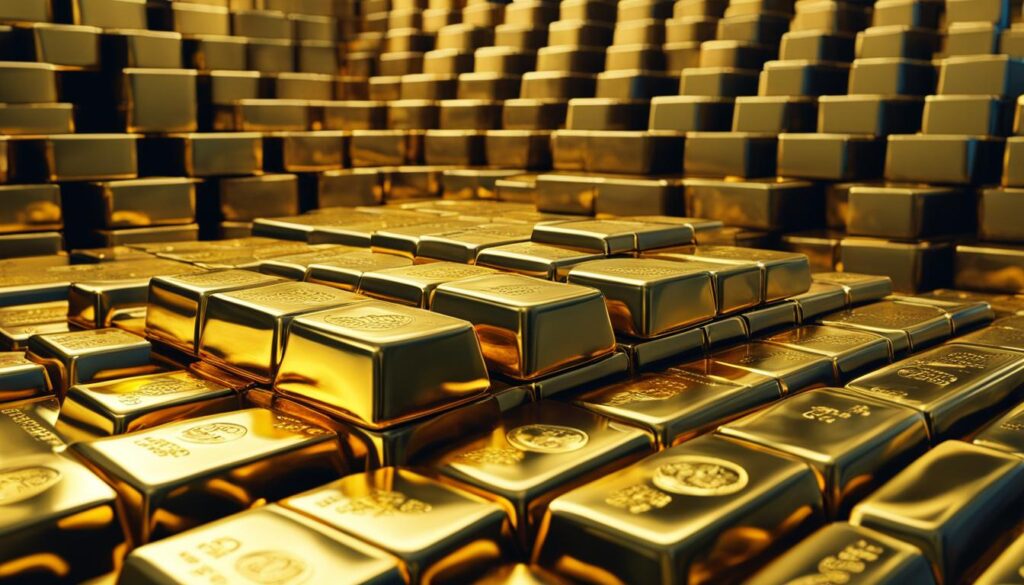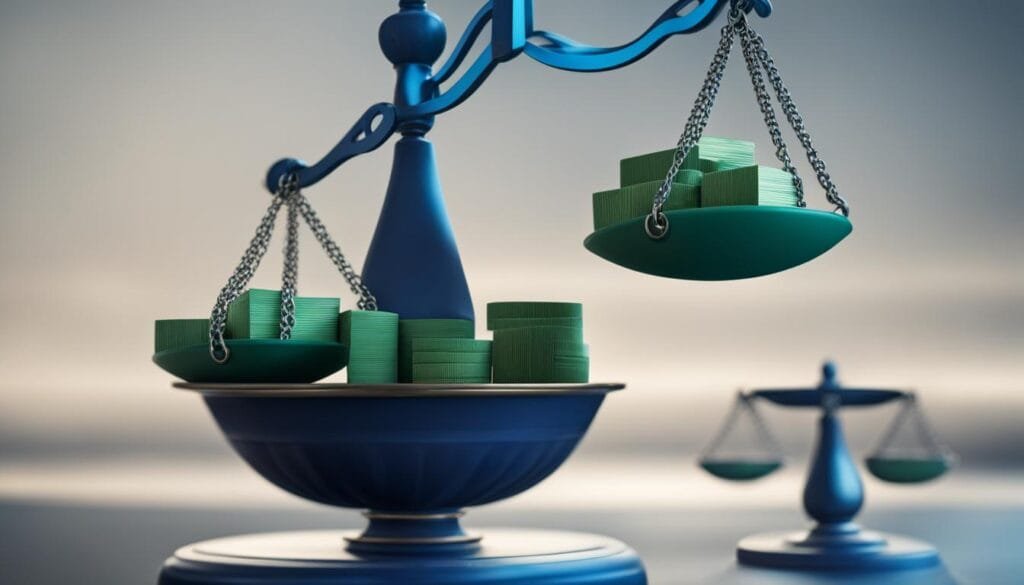Art and collectibles offer a unique investment opportunity, combining financial rewards with emotional fulfillment. These tangible assets, including artwork, antiques, and other collectible items, can hold significant value based on factors such as commercial appeal, social significance, and intrinsic qualities. However, investing in art and collectibles requires careful consideration due to the associated risks and challenges. This article will guide you through the intricacies of investing in these tangible assets and help you make informed decisions.
Key Takeaways:
- Investing in art and collectibles can provide financial and emotional rewards.
- The value of these assets depends on various factors such as commercial, social, and intrinsic value.
- Risks include high costs, lack of investment income, prevalence of counterfeits, and potential asset destruction.
- Art and collectibles can be a valuable addition to an investment portfolio if approached with knowledge and caution.
What Qualifies as Art and Collectibles?
Art and collectibles encompass a wide range of items that hold value beyond their original purchase price. Art, in particular, is a subjective form of expression that can take various forms, including paintings, sculptures, photographs, and installations. The value of art is often determined by factors such as commercial value (the cost at which it is bought and sold), social value (the emotional impact it has on individuals and society), and intrinsic value (the uniqueness and irreplaceability of the artwork).
Collectibles, on the other hand, refer to items that are sought after by enthusiasts due to their rarity, historical significance, or cultural importance. Common collectibles include antiques, coins, comic books, baseball cards, stamps, and toys. The value of these items is often influenced by factors such as their rarity, condition, age, and desirability among collectors.
It is important to note that the art and collectibles market is diverse and constantly evolving. New forms of art and collectibles emerge over time, reflecting the changing tastes and interests of collectors. Therefore, what qualifies as art and collectibles can vary, and it is essential for investors to stay informed about current trends, market dynamics, and the factors that influence the value of these assets.
What Qualifies as Art and Collectibles?
| Types of Art | Examples |
|---|---|
| Paintings | Oil paintings, watercolors, acrylics |
| Sculptures | Marble, bronze, wood carvings |
| Photographs | Black and white prints, digital photography |
| Installations | Mixed media installations, site-specific artworks |
What Qualifies as Collectibles?
- Antiques: Furniture, jewelry, ceramics
- Coins: Rare and valuable coins, including numismatic coins
- Comic books: Vintage comic books from popular series
- Baseball cards: Rare and limited edition baseball cards
- Stamps: Rare and historic postage stamps
- Toys: Vintage toys, limited edition action figures
The art and collectibles market is diverse and constantly evolving. New forms of art and collectibles emerge over time, reflecting the changing tastes and interests of collectors.
Understanding the definition and scope of art and collectibles is essential for investors looking to enter this market. By recognizing the various types of art and collectibles and the factors that influence their value, investors can make informed decisions and navigate this unique investment landscape.
Risks of Investing in Art and Collectibles
Investing in art and collectibles can be an exciting venture, but it’s important to be aware of the risks that come with it. While these tangible assets offer the potential for financial gain, there are several factors that can make them a challenging and risky investment.
Table: Risks of Investing in Art and Collectibles
| Risk | Description |
|---|---|
| High Costs and Fees | Purchasing, handling, storage, marketing, and insurance costs associated with art and collectibles can be substantial. These expenses can eat into potential profits and impact the overall return on investment. |
| Lack of Investment Income | Unlike traditional investments such as stocks or bonds, art and collectibles do not generate investment income or dividends. Investors rely solely on the appreciation of the asset’s value over time. |
| Difficulty in Valuation | Assessing the true value of art and collectibles can be challenging. The lack of information, limited comparables, and subjective nature of valuation make it difficult to accurately determine the worth of these assets. |
| Illiquid Market | The art market is relatively illiquid compared to other investment markets. Selling artworks may take time, and finding the right buyer at the desired price can be a lengthy process. This lack of liquidity can limit an investor’s ability to quickly access their capital. |
| Counterfeit and Authenticity Issues | The prevalence of counterfeits in the art market poses a significant risk to investors. Verifying the authenticity of artworks can be challenging, and owning a counterfeit piece can lead to significant financial losses. |
Understanding and mitigating these risks is essential for anyone considering investing in art and collectibles. It’s important to conduct thorough research, work with reputable dealers or galleries, and seek expert advice to navigate these challenges successfully.

Is Art a Good Investment?
Investing in art can be an enticing option for those looking to diversify their portfolios and potentially capitalize on the financial potential of the art market. While art investment can offer high returns and the opportunity to own unique and aesthetically appealing pieces, it’s important to approach it with caution and an understanding of the risks involved.
Unlike traditional investments, the value of art can be volatile and unpredictable. It is influenced by factors such as trends, demand, and the reputation of artists. The art market can experience significant fluctuations, making it essential for investors to carefully research and analyze the potential risks and rewards before committing their capital.
However, despite the inherent risks, art can be a valuable addition to an investment portfolio. It has the potential to provide both financial and aesthetic benefits. Art can act as a hedge against inflation, and historically, the art market has demonstrated resilience during times of economic downturn.
Art Market Performance Comparison
| Asset Class | Return % (10 Years) |
|---|---|
| S&P 500 | 192% |
| Gold | 90% |
| Art | 158% |
“Art is a tangible asset that has the potential to appreciate in value over time. It offers a unique combination of aesthetic enjoyment and investment potential, making it an attractive option for investors looking for alternative investment opportunities.” – Art Investment Expert
To make informed decisions when investing in art, prospective investors should consider factors such as the reputation of artists, the historical performance of specific art genres, the condition and authenticity of artworks, and the overall dynamics of the art market. Consulting with art advisors, auction specialists, and experts in the field can provide valuable insights and guidance.
Ultimately, investing in art requires a deep appreciation for the art itself, as it is both a financial and emotional commitment. By carefully researching and understanding the risks and rewards, investors can navigate the art market and potentially benefit from the unique opportunities that this alternative asset class presents.

How Do I Start Investing in Art?
If you’re interested in investing in art, there are several steps you can take to get started. First, it’s important to determine your financial goals, risk tolerance, and time horizon. This will help guide your investment strategy and determine the types of art you should focus on.
Once you have a clear understanding of your investment goals, you can begin researching artists and their market performance. Look for artists whose work has consistently increased in value over time and whose work is highly regarded by art critics and collectors. This will help you identify artists with a strong potential for future appreciation.
To physically own artwork, you can participate in auctions or purchase directly from galleries. These direct purchases allow you to have a hands-on approach to your investments. Alternatively, fractional ownership platforms offer a more accessible and diversified approach to investing in art. Through these platforms, you can own a fraction of a valuable artwork, spreading the risk across multiple pieces.
Another option is to invest indirectly in art through publicly traded companies associated with the art world. These companies may specialize in art storage, transportation, or even art lending. By investing in these companies, you can gain exposure to the art market without directly owning physical artwork.
Overall, investing in art requires careful consideration and research. By taking the time to understand the market, explore different investment strategies, and diversify your portfolio, you can begin your journey into the world of art investment.
Table: Pros and Cons of Different Art Investment Approaches
| Approach | Pros | Cons |
|---|---|---|
| Direct Purchases |
|
|
| Fractional Ownership |
|
|
| Indirect Investment |
|
|
“Investing in art requires careful consideration, research, and a deep understanding of the market.” – Art Investor
Investing in art can be a rewarding and potentially lucrative endeavor for those who approach it with knowledge and passion. By following these steps and considering the various investment approaches, you can confidently navigate the world of art investment and potentially unlock both aesthetic enjoyment and financial potential.
Why Do Rich People Buy Art?
Rich people often invest in art for a variety of reasons. One significant factor is the ability to display their wealth and social status. Art is often associated with prestige, and owning valuable artworks allows affluent individuals to showcase their affluence and taste. Additionally, art can appreciate in value over time, making it a potential long-term investment. Unlike other assets, such as stocks or bonds, art can be physically enjoyed while still offering the potential for financial growth. This duality of aesthetic and financial benefits makes art an attractive investment option for the wealthy.
Moreover, buying art enables rich people to diversify their investment portfolios. Art can serve as a hedge against traditional financial markets and provide a degree of protection against potential economic downturns. It offers an alternative asset class that behaves differently from stocks and bonds, thus reducing the overall risk of their investment portfolios. By diversifying their holdings with art, affluent individuals can further safeguard their wealth and potentially achieve higher returns.
Another reason why rich people buy art is its potential for tax benefits. In some countries, investing in art can provide tax advantages, such as exemptions or lower capital gains tax rates. By selling and reinvesting in art, wealthy individuals can mitigate their tax liabilities and optimize their overall financial strategies. The combination of tax benefits and the potential for growth and enjoyment makes art an attractive investment avenue for the affluent.
In summary, rich people purchase art for various reasons, including demonstrating their wealth and social status, diversifying their investment portfolios, and capitalizing on potential tax benefits. Art provides a unique blend of aesthetic enjoyment and financial potential, making it an enticing asset class for the wealthy. By investing in art, affluent individuals can not only showcase their wealth but also achieve financial growth and diversification.

Table: Comparing Art as an Investment to Traditional Asset Classes
| Asset Class | Potential ROI | Liquidity | Risk |
|---|---|---|---|
| Stocks | High | High | Market Volatility |
| Bonds | Low to Moderate | High | Interest Rate Risk |
| Real Estate | Moderate | Low to Moderate | Market Cycles |
| Art | Variable | Low | Market Trends |
The Unseen Financial Powerhouse: Art in New York City
New York City is not only a global cultural center but also a dominant force in the art market. With its renowned galleries, auction houses, and private dealers, the city has established itself as a prime destination for art investors. In fact, in 2018, the art market in New York City was valued at an impressive $28.3 billion, representing a staggering 44% of the global market.
The city’s vibrant art scene is fueled by a combination of factors. Its rich cultural heritage, diverse population, and thriving creative community contribute to a constant influx of new art and artistic talent. This continuous stream of fresh artwork keeps the market dynamic and appealing to both local and international investors.
Furthermore, the presence of prestigious institutions, such as the Museum of Modern Art (MoMA) and the Metropolitan Museum of Art, adds prestige and credibility to the city’s art market. These institutions not only showcase exceptional works but also provide education and research opportunities, attracting art enthusiasts and investors from around the world.
Table: Major Art Auctions in New York City
| Auction House | Annual Sales (2018) |
|---|---|
| Sotheby’s | $6.4 billion |
| Christie’s | $5.3 billion |
| Phillips | $916 million |
| Bonhams | $502 million |
The table above highlights the annual sales of major auction houses in New York City. Sotheby’s and Christie’s, two of the most prestigious auction houses in the world, dominate the market. Their combined annual sales in 2018 reached an impressive $11.7 billion, showcasing the financial power of the art market in the city.
“New York City’s art market is a financial powerhouse that attracts collectors, investors, and art enthusiasts from around the globe. It offers unparalleled opportunities to acquire and trade exceptional works of art, making it a crucial player in the global art scene.” – Art Market Analyst
Investing in art in New York City not only holds the potential for financial gains but also contributes to the city’s cultural heritage. The thriving art market supports local artists and galleries, fosters creativity, and enhances the city’s overall cultural landscape. Whether you are a seasoned art investor or a newcomer to the market, New York City offers a vibrant and lucrative environment to explore the world of art investment.
Conclusion
Investing in art and collectibles can be a rewarding and potentially lucrative endeavor. These tangible assets offer a unique combination of aesthetic enjoyment and financial potential, making them a valuable addition to an investment portfolio.
However, it’s important to approach art investment with knowledge, passion, and a willingness to take calculated risks. Understanding the art market and conducting thorough research are essential to navigate this world of tangible assets successfully.
Additionally, diversifying your investment portfolio is crucial to mitigate the risks associated with art investment. By spreading your investments across different types of art and collectibles, you can reduce the impact of market fluctuations and increase your chances of financial success.
Investing in art and collectibles requires a long-term perspective and patience. While there are risks involved, the potential for both financial and emotional rewards makes it an exciting venture for those interested in the art world. With careful planning and a strategic approach, you can transform your portfolio and unlock the full potential of these tangible assets.
FAQ
What qualifies as art and collectibles?
Art and collectibles encompass a wide range of items whose values exceed their original purchase price. This can include paintings, sculptures, antiques, coins, comic books, baseball cards, stamps, and toys, among other things.
What are the risks of investing in art and collectibles?
Investing in art and collectibles comes with risks such as high costs and fees, a lack of investment income, the prevalence of counterfeits, and the potential for asset destruction. The value of these assets can also be volatile and unpredictable.
Is art a good investment?
Art can be a valuable addition to an investment portfolio, offering both financial and aesthetic benefits. However, it’s important to recognize that investing in art also carries risks, and the value of art can be influenced by factors such as trends and demand.
How do I start investing in art?
To start investing in art, it’s important to determine your financial goals, risk tolerance, and time horizon. You can begin by researching artists, their market performance, and the historical and critical reception of their work. You can also consider purchasing art directly at auctions or from galleries, investing indirectly through publicly traded companies associated with the art world, or exploring art financing options.
Why do rich people buy art?
Rich people buy art for several reasons. It allows them to display their wealth and high social status, as art is often associated with prestige. Additionally, art can appreciate in value and serve as an investment that can be passed down through generations. Buying art also provides a way to diversify their investment portfolios and potentially avoid taxes when selling and reinvesting in art.
What makes New York City a hub for the art market?
New York City is a global hub for the art market, accounting for a significant portion of art sales worldwide. The city is home to renowned galleries, auction houses, and private dealers, making it an attractive destination for art investors. In 2018, the art market in New York City was valued at $28.3 billion, representing 44% of the global market.
What Makes Rare and Unique Items Valuable for Collectors?
For collectors, investing in collectibles: finding value lies in the rarity and uniqueness of items. The scarcity of an item increases its desirability and subsequently its value. Additionally, items with historical significance or that are associated with influential figures hold immense worth. The demand for such extraordinary pieces drives their market value higher, making them highly sought after by collectors worldwide.


Pingback: Real Estate Investments: Exploring Opportunities in Property and Land – Straight Fire Money